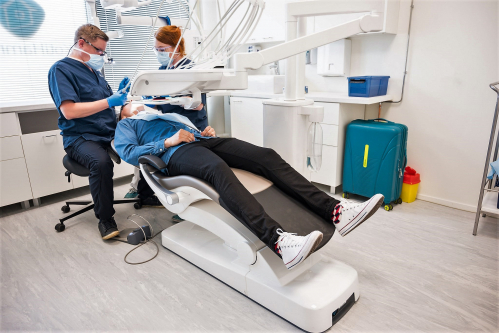Anesthesia in dental care

Anesthesia is most commonly used during root canal treatment, tooth extraction procedures and extraction surgeries. Anesthesia is also very commonly used during dental filling procedures, and sometimes it might be necessary during tartar removal. Normally the numbing effect of anesthesia lasts for a few hours from the time it has been given.
Why is anesthesia used?
Teeth can be anesthetized during dental treatment to prevent the patient from experiencing pain. Anesthesia prevents the feeling of pain by preventing the pain sensation from passing from one nerve cell to the next. In this way, the pain sensation is prevented during dental treatment.
The feeling of pain can also be a part of a patient's fear of the dentist. When the procedure is performed under anesthesia, the treatment is easier, as well as painless and more comfortable for the patient as well.
Different types of anesthesia
In dental care, individual teeth or the entire jaw halves can be anesthetized. In anesthesia of individual teeth, the anesthetic is inserted with a needle near the tip of the tooth's root. If the anesthesia is to extend to the entire jaw half, the dentist will perform conduction anesthesia. In this case, numbness may also be felt slightly in the nostrils as well as in the tongue.
Topical anesthesia can also be used in dental care. Topical anesthesia is a gel, ointment, or spray applied to the mucosa that acts by anesthetizing soft tissue. The duration of surface anesthesia is shorter compared to injectable anesthetics.
Ingredients in anesthetics
Anesthetics containing lidocaine, prilocaine or articaine as the active ingredients are most commonly used in dentistry. In addition, anesthetics often contain adrenaline, which constricts blood vessels.